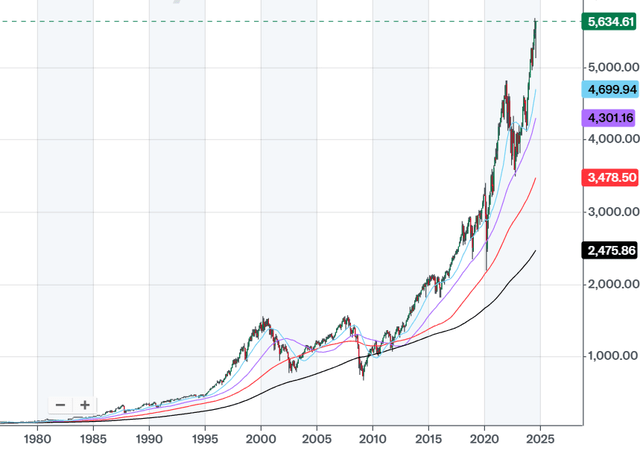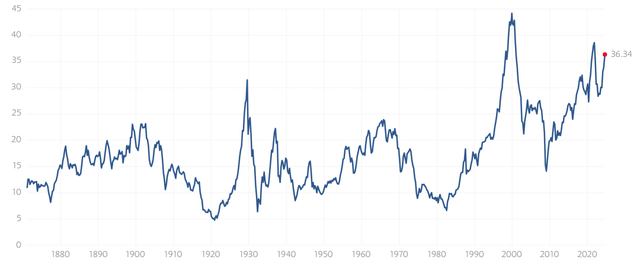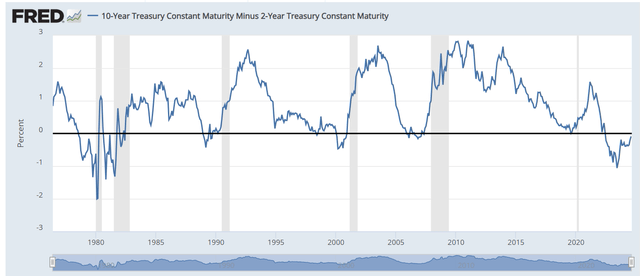SP500: The Bubble Burst And An Imminent Recession
Summary
- The S&P500 is a bubble, based on valuations, led by the tech mega caps, and the bubble is in the process of bursting given the fade in Gen AI hype.
- The market is also facing an imminent recession, based on the yield curve pattern, supported by a weakening labor market, and expected monetary policy.
- Thus, my baseline opinion is still very bearish, but given the bubble dynamics, the market is vulnerable to sharp rallies, which is what's currently happening.

Monty Rakusen
The "coming out of coma" analysis
The most important thing in making investment decisions is to be able to objectively analyze the markets. However, once the position is established, it's difficult to remain objective, and the analysis of incoming data tends to be biased. For example, the bearish investors will always look for bearish confirmation in the data, while the bullish investors will always see the bullish case in the same data.
Thus, I will do the so-called "coming out of coma" analysis to objectively analyze the current state of the market and the economy. The idea is to assume that you just "wake up" without any positions in the market, and to make the investment decisions based on all available data.
This is an exercise that all investors can do individually, but these are the steps I would follow.
The parabolic chart - potential bubble?
I would first look at the long-term S&P500 (SP500) to evaluate the historical price pattern. So, here is the S&P500 chart. I see a sharp exponential trend higher after 2020, a deeper correction, and then another parabolic move higher.
The fact that the most recent move in the S&P500 since 2022 is virtually vertical, would make me question whether this move is some kind of melt-up or a blow-off top. Specifically, I would question whether this move can be justified with fundamentals, or if it's a bubble.

S&P500 (Yahoo)
Valuations high - bubble confirmed
Next, I would look at the valuation metrics to evaluate whether the vertical price move since 2022 is fundamentally justified, or it's a bubble.
- The ttm P/E ratio, which considers the earnings over the last 12 months, is at 24.5. The average P/E ratio over the long term is around 15 to 16. Thus, based on this valuation metric, the S&P500 could be overvalued by 33%.
- The forward P/E ratio, which considers expected earnings over the next 12 months, is at 23.1, which is also very high, and means that the expected earnings growth over the next 12 months does not support the current price.
- The price move over the last 12 months was caused by PE multiple expansion from 22.5 to 24.5, meaning the earnings growth over the last 12 months did not support the price move.
- But the most importantly, when you consider the average earnings over the last 10 years, adjusted for inflation, the Shiller P/E ratio is above 36, which is almost comparable to the 2000 dot.com bubble.
- Thus, I would conclude that the vertical move in the S&P500 since 2022 is likely a bubble - based on the PE valuation metrics.

The Wall Street Journal

Shiller P/E ratio (multpl.com)
The Gen AI bubble
Next, I would try to find out where exactly the bubble is, and try to determine whether the bubble could continue, or if there is an imminent bubble burst. Obviously, buying the bubble can be a great short-term strategy, but being caught in the bubble burst could be determinantal for one's portfolio.
After some analysis, I would stumble upon the Generative AI theme and the ChatGPT invention in 2022, and isolate Nvidia (NVDA) as the poster child of the GenAI bubble. I would look at the NVDA chart and see the parabolic move higher - so, that's where the bubble is. The NVDA bubble is confirmed with the PS ratio of 40. Just for comparison, another major chipmaker AMD (AMD) has a PS ratio of 10 - still very expensive, but not nearly as expensive as NVDA's.

NVDA (Barchart)
Next, I would try to determine whether the bubble could continue. I would stumble upon the GenAI bubble dynamics, where the tech megacaps rush to spend a trillion dollars of Gen AI capex - but the Gen AI capex is not expected to produce a meaningful rate of return over the near future.
Furthermore, I would find out that the GenAI currently has no impact on the economy. The companies using GenAI are not experiencing a meaningful increase in revenues. The Economist is promoting the following story on Facebook:

Facebook (the Economist)
Thus, I would conclude that the GenAI hype is fading and that the Gen AI bubble is either close to the top, or based on NVDA's chart, the bubble-burst is already in progress.
Thus, given that NVDA is 7% of the S&P500, and the top six tech megacaps count for 33% of S&P500, I would conclude that the S&P500 is a bubble, as previously explained.
An imminent recession
Next, I would look at the yield curve to evaluate the business cycle, and specifically estimate the probability of a recession, and thus a recessionary bear market.
The spread between the 10Y Treasury Bond and the 2T Treasury Note has been inverted since 2022, and it's currently in the process of getting un-inverted. Historically, this situation has led to an imminent recession. Thus, I would conclude that we are facing an imminent recession.
Furthermore, I would look at the Federal Funds futures to evaluate the expected monetary policy. The expectations are that the Fed is about to start with an imminent policy easing, and cut by 2-2.5% over the next 12–16 months - and that usually happens in a recession. Thus, the bond market is already priced for a recession.

10Y-2Y spread (FRED)
Next, I would look at the unemployment rate. The chart below shows that the unemployment rate has risen from 3.4% to 4.3%, which usually happens right before the recession starts, based on the Sahm rule. This confirms that we are facing an imminent recession.

Unemployment rate (FRED)
Implications
So, this is what the objective analysis would show.
The baseline bearish case
I would conclude that the S&P500 is in the process of a melt-up, and it's a bubble based on valuations. Furthermore, the bubble is likely to burst as the Gen AI hype fades. Further, I would conclude that we are facing an imminent recession, which is also likely to accelerate the bubble burst. Thus, my baseline outlook would be very bearish - I would reduce the exposure to equities.
The alternative bullish case
Just to make sure the analysis remains objective, I would develop an alternative bullish scenario. The bullish scenario can happen under two conditions:
- The Gen AI evolves with an application or user case that proves to significantly increase productivity, and thus, ensures a much higher economic and earnings growth than currently expected. This would justify the valuations.
- The economy manages to avoid a recession. For this soft-landing or no-landing scenario, this would have to happen:
- The unemployment rate stays below 4.5%, while inflation falls to 2%.
- Thus, the Fed normalizes interest rates, which boosts the economy, and the stock market.
Both of these conditions would have to be met for the bullish scenario.
My opinion
My position has been bearish, so to avoid being subjective, I re-looked at the facts objectively. Based on this analysis, my opinion remains bearish. With that said, given the bubble dynamics, the markets can experience sharp rallies - which is what's currently happening.
This is my opinion, and each investor needs to develop their own opinion, objectively, based on facts. Is there anything I'm missing in my analysis?
Disclaimer: Investing carries risk. This is not financial advice. The above content should not be regarded as an offer, recommendation, or solicitation on acquiring or disposing of any financial products, any associated discussions, comments, or posts by author or other users should not be considered as such either. It is solely for general information purpose only, which does not consider your own investment objectives, financial situations or needs. TTM assumes no responsibility or warranty for the accuracy and completeness of the information, investors should do their own research and may seek professional advice before investing.

What’s your thoughts on the Nasdaq exchange Damir - running in similar waters?